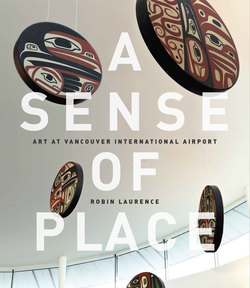Читать книгу A Sense of Place - Robin Laurence - Страница 13
На сайте Литреса книга снята с продажи.
Оглавлениеxiv
structure and economic exchange. They also developed a distinctive material culture, with a monumental scale and wealth of expression that were unmatched in Native America anywhere north of pre-Columbian Mexico. The abundance of food sources on the Northwest Coast (most pivotally, the annual salmon runs) allowed for a seasonal division of the year. Summers were spent accumulating and processing food. In the winter, they planned and performed social and religious rituals, using the art that they produced for the ceremony. Towering and abundant evergreens, such as red cedar, provided the basic material for much of the art and all of the architecture.
The nature-based mythology at the heart of Northwest Coast First Nations culture explains the making of the world and its inhabitants, and recounts ways in which distant ancestors garnered special privi-leges through encounters with supernatural animals and beings. These privileges, includ-ing dances, songs, masks, stories and the right to display crest images, were and are regarded as private property. Fiercely guarded, they have been passed from generation to generation through properly observed public rituals such as the feasting and gift-giving events known as potlatches. The art of the Northwest Coast makes visible complex social orders, records important family histories
and describes the individual’s place within the cosmos. The best known of the area’s art forms are carved and painted totem poles, inter-nationally esteemed for their impressive scale, technical accomplishment and visual impact. (The term “totem pole” is a misnomer, since the figures represented are more heraldic than totemic; however, it is so widely used that it has become established and accepted.)2 Carved in cedar, they vary in form, content and function, and include memorial poles, house frontal poles, interior house posts and mortuary poles.
Because of their shared, homogeneous environment, Northwest Coast peoples devel-oped similar technologies and mega-cultural traits but remain divided by language and distinctive art styles and traditions. Running mostly from north to south, the Northwest Coast First Nations of British Columbia are identified as Tlingit, Tahltan, Haida, Nisga’a, Gitxsan, Tsimshian, Haisla, Heiltsuk, Nuxalk, Oweekeno, Kwakwaka’wakw, Nuu-chah-nulth and Coast Salish. Within these nations, smaller subgroups exist, distinguished by their own dialects and cultural traditions.3 For example, the Musqueam, on whose traditional lands YVR stands, are a Coast Salish people who spoke a dialect of the Salishan language Halkomelem. Their lengthy history, rich culture and traditional claim to this place are integral to the Musqueam Welcome Area at YVR. A wide range of art from different First Nations traditions, representing
